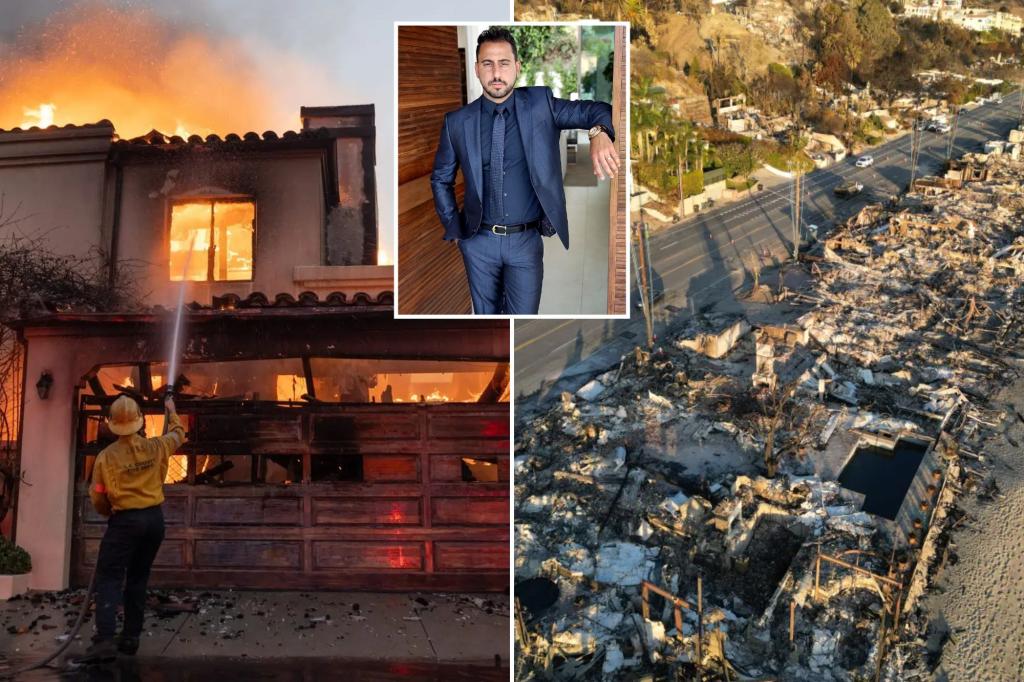The devastating Palisades Fire has irrevocably altered the landscape of the Pacific Palisades, and according to real estate expert Josh Altman, the community will likely never be the same. Altman predicts a mass exodus from the area, driven by a confluence of factors, including widespread underinsurance, the emotional toll of repeated fire threats, and the daunting prospect of rebuilding. He estimates that a significant majority of residents, potentially as high as 65-70%, will choose to relocate rather than face the arduous and lengthy process of reconstruction. This exodus, he believes, will pave the way for a “totally new crowd” to reshape the Palisades’ demographic.
Altman’s prediction stems from his firsthand experience with affected residents. He has been inundated with calls from individuals seeking properties in different neighborhoods, explicitly expressing their desire to escape fire-prone areas. The trauma of experiencing multiple fires has eroded their sense of security, leaving them unwilling to gamble on the possibility of future disasters. Furthermore, the complex and time-consuming nature of rebuilding, coupled with the reality of being significantly underinsured, presents an insurmountable obstacle for many. The financial burden of rebuilding at current construction costs, which can reach $1,000 per square foot, is simply too great for those whose insurance payouts fall short. This financial strain, combined with the emotional exhaustion of navigating the aftermath of a fire, pushes residents towards seeking fresh starts elsewhere.
Adding fuel to the fire, so to speak, is the ongoing insurance crisis in California. A moratorium on new insurance policies within a 35-mile radius of the fire line has left countless homeowners without coverage. Even for those outside the moratorium zone, premiums are expected to skyrocket, further deterring residents from rebuilding. This lack of insurance options makes rebuilding financially unfeasible for many, forcing them to sell their land and accept insurance payouts as they attempt to salvage what they can and move on. Altman suggests that many residents, frustrated by the insurance situation and unable to leave California altogether, are considering relocating to Orange County as a potential alternative.
The rebuilding process itself presents a significant challenge. Altman emphasizes that most individuals lack experience in construction and underestimate the time, complexity, and expense involved. Rebuilding in California, with its stringent regulations and meticulous permitting processes, is particularly demanding. Even with expedited permitting, which authorities are reportedly considering, the construction phase alone could take up to two years. Considering the time required for debris removal and site preparation, which Altman estimates at approximately one year, the entire rebuilding process could realistically span three years or more. This prolonged timeline, coupled with the uncertainty of living in a neighborhood undergoing staggered reconstruction, further discourages residents from returning.
Altman paints a realistic, albeit disheartening, picture of the future of the Palisades. He projects a timeline of four to five years before the community begins to resemble its former self. This protracted period of reconstruction, coupled with the anticipated demographic shift, will inevitably transform the character of the Palisades. While he acknowledges the emotional and financial strain on residents, Altman maintains his confidence in the area’s long-term resilience. He firmly believes the Palisades will remain a desirable location, a prime real estate investment, and a vibrant community, albeit one populated by a new generation of residents.
Despite the devastation and anticipated changes, Altman remains optimistic about the Palisades’ future. He emphasizes its enduring appeal: prime location near the beach and water, a thriving community, and strong long-term investment potential. These inherent advantages, he believes, will attract new residents even as current homeowners grapple with the difficult decision of whether to rebuild or relocate. The Palisades will undoubtedly persevere, albeit with a transformed landscape and a new community at its heart. The fire, while devastating, will ultimately serve as a catalyst for change, ushering in a new era for the Pacific Palisades.

